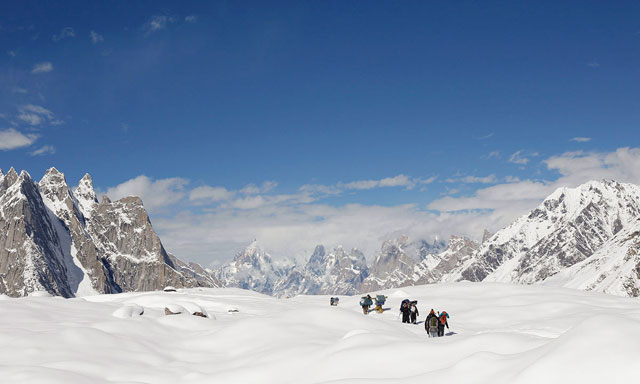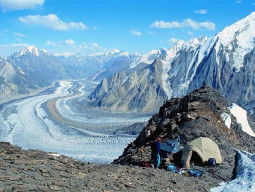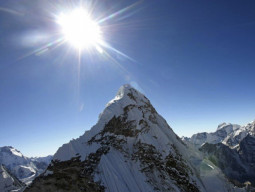
Almost half of Pakistan's 5,000 glaciers, covering around 15,000 square kilometers, are in rapid retreat, scientists say. The rate of glacial melt, which has risen by about 23 percent in the previous decade, is among the fastest in the world, according to the Pakistan Meteorological Department (PMD).
Environmentalists call G-B a ‘ticking bomb’
Last month, the government approved 892.5 million rupees for a four-year project to expand the network of monitoring stations as officials seek more accurate data on temperature, humidity, changing rainfall patterns and wind speed, while tracking the rate at which glaciers are melting.
"The initiative is indispensable for enhancing the country's climate resilience, and vital to the meteorological department's ability to timely release warnings about the flood risk," Ghulsam Rasul, director-general of the meteolorological department, told the Thomson Reuters Foundation in an interview.
"Based on data from these weather stations, timely warnings will be issued to provide a lead time of 60 to 90 minutes to communities in flood-prone areas to respond effectively to early flood warnings," he said.
Pakistan is one of the most disaster-prone countries in the world. In 2010, the country suffered the worst floods in a generation with more than 1,600 killed and over 14 million affected as floodwaters inundated over a third of the country.
Investing in disaster preparedness not only saves lives but also money with each $1 dollar spent saving $7 in tackling the aftermath of disasters such as floods, development experts have said.
SMS alerts
Pakistan's meterological department also has submitted a six-year plan to modernize the country's aging weather forecasting system - at a cost of 16.6 billion rupees ($159 million) - to Prime Minister Nawaz Sharif for approval.
The plan proposes installing 22 meteorological radar stations across the country and 400 advanced automatic weather stations, while overhauling community-based weather observatory stations in 98 districts.
"Our radar network – comprising seven flood warning radars - is now very poor and obsolete," Ghulam Rasul said.
Summer woes: Locals mint money from glaciers in Chitral
Besides expanding early warning systems, disaster management officials are focusing on getting early warnings to as many people as possible as quickly as possible, said Ahmad Kamal, a spokesman for the National Disaster Management Agency.
The agency has sought cooperation from the state-owned Pakistan Telecommunication Authority and bodies regulating print and electronic media to disseminate weather forecasts and early warnings by SMS and print media when disaster threatens.
Kamal said as many as 10 million SMS alerts were sent to disaster-prone communities in 2015, adding that SMS alerts had proven to be the most effective way of communicating with remote communities, particularly in mountainous regions.
"Despite the same intensity of summer monsoon rains in 2015 as observed in the preceding years, loss of life and cattle in mountain areas was 80 to 90 percent less," Kamal said.
In a country of 200 million people, more than 140 million are mobile phone users, he noted.
"Loss of the life from disasters can be brought zero if one early warning SMS alert about any possible disaster is relayed to these big number of mobile phone users in the country," he suggested.



















1714027629-0/Ranbirtransformation-(1)1714027629-0-270x192.webp)

























COMMENTS (2)
Comments are moderated and generally will be posted if they are on-topic and not abusive.
For more information, please see our Comments FAQ